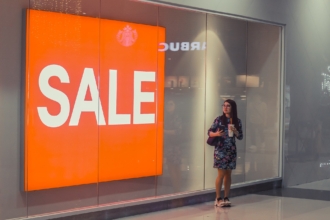If you’ve bought eyeglasses from Warby Parker, shoes from Allbirds, or grooming products from Dollar Shave Club, you’ve helped push the direct-to-consumer (D2C) sales model to the forefront of today’s economy.
Brands like these are disrupting retail by eliminating the retailer. Rather than selling wholesale to a brick-and-mortar shop — or through e-commerce giants like Amazon — D2C brands operate their own sales channels, usually online.
But as retail models go, we’re still in the early days of online D2C sales. E-commerce itself is only decades old. The contemporary D2C brand — characterized by near luxury positioning, a branding-first marketing strategy, and close relationships with consumers — is even younger.
Recently, the COVID-19 pandemic forced a growth spurt in the D2C sector thanks to isolated shoppers and shuttered offline businesses, and that’s likely to change how the industry develops.
We asked experienced digital marketers and D2C business owners about the direct-to-consumer trends they’re watching in 2024. Here are some of their predictions.
1. The internet of voice will hit its stride, and D2C brands should prepare for both voice search and voice shopping
In a 2019 survey, Statista found that nearly 35 percent of respondents had not only made a purchase through a smart speaker, but that they had enjoyed the experience (only 6.5 percent didn’t). As voice user interfaces become more prevalent — and users become accustomed to speaking to the internet rather than clicking through it — that number is likely to rise.
Because direct-to-consumer brands are also e-commerce sellers, almost by definition, tomorrow’s sales leaders will be ready to reach their customers through voice-enabled devices — smart speakers, wearables, voice assistants, and more — in a technology early adopters are calling the “internet of voice.”
That means D2C brands must set up voice shopping channels. They’ll also need to optimize content for voice search, a more competitive space than the standard search engine results page because users will often hear only a single reply to any given query.
“Businesses that seek to stay ahead of the competition are already looking at how to enable performance and rank in voice search results, which is often far from intuitive,” says Polly Kay, senior marketing manager at D2C seller English Blinds.
2. Direct-to-consumer brands will have to pay more to attract new customers
In early 2020, Google announced that it would eliminate third-party cookies from its market-dominating browser, Chrome, within two years.
That has serious ramifications for D2C advertisers, who disproportionately rely on digital channels and high-value services like ad retargeting. This retargeting — in which advertisers display their ads to prospects wherever they travel on the internet — relies on the very snippets of code that Google plans to outlaw.
Add rising competition, and it seems that D2C brands will soon face serious marketing challenges.
“While more people will be looking to purchase online [in 2022], D2C brands will continue to suffer from increasing costs of customer acquisition,” says Suzanne Barker, marketer and cofounder of When I Shop.
“Competition and advertising costs will become even fiercer on social platforms, and, as Google looks set to remove third-party cookies from its Chrome browser, D2C brands will see their vital e-commerce retargeting strategy go away,” Barker adds.
In order to prepare, Barker says, “D2C brands should diversify their customer acquisition efforts in emerging marketplaces — platforms like Pinterest and Snapchat — and in pop-up stores.” And speaking of pop-up stores…
3. Online D2C sellers will move offline — and into new online channels
We still don’t know the course the coronavirus pandemic will take. But if people can gather in 2022, odds are that D2C brands will be there.
“Of the many trends that will emerge in 2022, the top two will be the boom of offline e-commerce and shoppable TV,” says Scot Chrisman, CEO of The Media House. “Companies will surely try to do pop-up stores and kiosks to get closer to the audience and have more engagement with the consumers.”
And as digital advertising runs into cost challenges, brands may shift back to an old standard: television. “[Brands] will surely make use of television ads for their promotions,” Chrisman says. In fact, they may return to the great D2C channel of the early 1990s: direct response television (DRTV). With smart TVs, in fact, DRTV may only become more effective, allowing viewers to buy directly from the screen without dialing a call center or visiting a website on a different device.
4. Marketing data from social channels will be easier to convert into usable intelligence
Yes, the price of paid social impressions is likely to rise. But the trade-off is that social media platforms are getting better at collecting data — and at using that data to provide powerful key performance indicators (KPIs).
“Now that many customers are all-in on digital through COVID-19, with the rise of TikTok and its deals with Shopify, Facebook Shop, and Instagram Commerce, D2C businesses can directly map their social media efforts to their commerce and sales ROI goals,” says Robb Hecht, adjunct professor of marketing at Baruch College in New York.
5. Customers will expect D2C brands to reach out to them well after the moment of purchase
One of the greatest strengths of the direct-to-consumer sales model is that it allows brands to create stronger relationships with their customers. Because brands own all the data generated by a sale, they can get to know their audiences in specific ways, ask for any information they want, and use that information to create a more personal shopping experience.
Consumers are getting used to this treatment, and they’ll soon come to expect it.
“For the businesses they opt into with a subscription relationship, [consumers] want that brand to be with them wherever they go, delivering them ads, texting them, pinging them on Messenger in a respectable manner,” Hecht says. “Increasingly, D2C brands will be like human friends, holding their customers’ hands down the purchase journey.”
There’s no reason to wait for these direct-to-consumer trends to emerge. The D2C brands that succeed tomorrow will be the ones that prepare for market changes today. Learn more about the direct-to-consumer sales model in our comprehensive guide.









Send Comment: